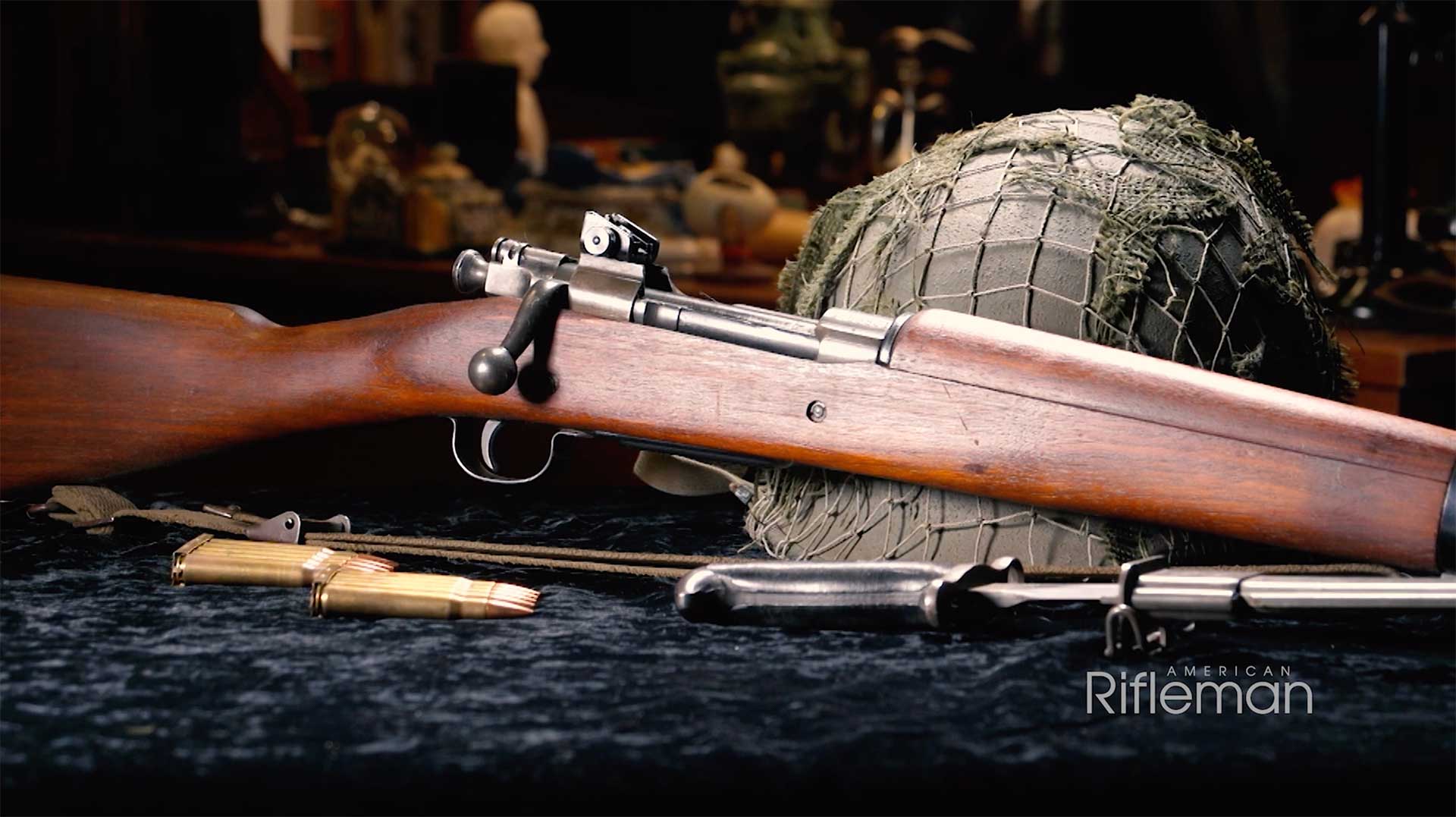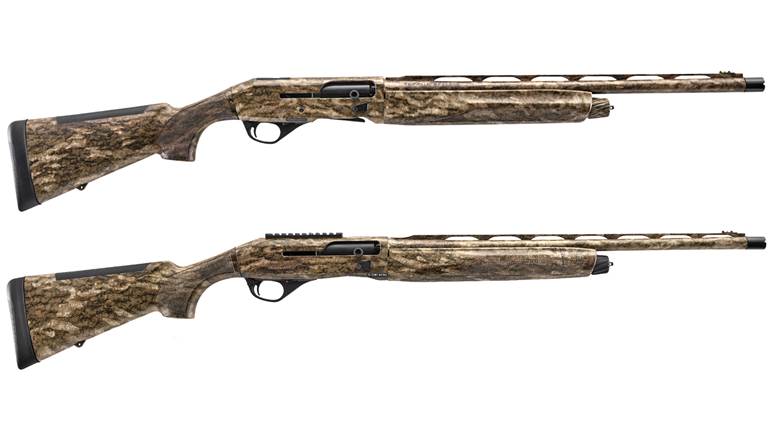
The well-established reputation of the Winchester Rifle has induced certain parties to offer for sale other makes of guns as ‘Improved Winchester.’ We desire to caution buyers that all guns made by us are stamped on the barrel or on the lower tang … ‘Manufactured by the Winchester Repeating Arms Co.’ … All Guns bearing these stamps are guaranteed by us, if used with Ammunition of our manufacture.” So read, in part, the “Caution to Purchasers” on page 2 of the March 1891 Winchester Repeating Arms Co. catalog, right under a sectional drawing of the Model 1873’s action.
The Winchester Model of 1873 has been called “The Gun that Won the West” for generations-and with good reason. Nearly a quarter-million of the iconic lever-actions were produced between 1873 and 1919. Today, for the first time since the signing of the Versailles Treaty, the Winchester 1873 is back on the market with the venerable Winchester name “stamped” (really roll-marked) on the barrel.
A Brief History Of The Model 1873
Recently at Brian Lebel’s Old West Auction the only known photograph of “Billy the Kid” extant sold to William Koch, of Palm Beach, Fla., for $2.3 million, making it the most expensive historic photograph ever sold. Taken on the front porch of a building in Fort Sumner, New Mexico Territory during the fall of 1880, the image shows a confident William Henry McCarty, Jr., holding a Winchester Model 1873. Books on the Old West are full of photographs of cowboys and the like posing with their favorite rifles, more often than not, Model 1873s. It has been often referred to as the “Gun that Won the West,” while some historians might dispute the title, more than 720,000 Model 1873s were produced, and its presence and role in opening the American West is most assuredly not in question.
Oliver F. Winchester was born in Boston, Mass., and was a prosperous clothing manufacturer in New Haven, Conn., when he invested heavily in the Volcanic Repeating Arms Co. founded by Horace Smith and Daniel Wesson in 1855. By 1857, the Volcanic had failed to find its niche in the American firearm market, due largely in part to the unique self-contained Volcanic cartridge and the problems inherent with a cartridge that had exposed powder in the base of the projectile. Winchester bought out Smith’s and Wesson’s interests in the company and reorganized it as the New Haven Repeating Arms Co. Along with the company he acquired the skills and knowledge of the chief foreman, Benjamin Tyler Henry.
By 1860 Henry was able to work out some of the bugs in the Volcanic design, and using the newly introduced .44 rimfire self-contained copper cartridge, introduced the famous lever-action that bears his name, the Henry Rifle. More than 14,000 were produced during the Civil War. The year 1866 brought about a new model with a side loading gate (King’s Improvement) and a wooden fore-end, as well as a new name, Winchester. Still available only in .44 rimfire, about 170,000 were produced between 1866 and 1898. The Model 1866 also had an added feature, a two pronged firing pin that struck the rimfire cartridge in two spots, ensuring positive ignition.
With the popularity, increased performance and reliability of center-fire cartridges, Winchester introduced the Model 1873 in .44-40 Win. (also known as .44 Winchester Center Fire or .44 WCF) to a very receptive marketplace. Also chambered in .32-20 Win. and .38-40 Win., this model outlasted and outsold all other Winchester lever-actions until the introduction of the John Moses Browning-designed Model 1894. With the capability of having one cartridge for both rifle and revolver, the Model 1873 chambered in .44-40 Win. was a frontier favorite.
Available in a dizzying array of variations, today’s collector can easily spend the rest of his or her life-and a considerable fortune-collecting the various types and variations of the Model 1873. Rifles, carbines, muskets, deluxe and even one of 100 (eight made) and one of 1,000 (136 made) special-order deluxe engraved guns, offer the collector a wide variety to seek for their collections.
Shooting the “New” Model 1873
Available in two variations from the Winchester Repeating Arms Co.-the Model 1873 Short Rifle and Model 1873 Sporter Case Hardened-this “new” lever-action is a worthy successor to its legendary predecessor. Both models have 20-inch round barrels and are only chambered in .357 Mag., which allows the shooting of .38 Spl.-the latter is a favorite of cowboy action shooting competitors. The Short Rifle, reviewed here, has a blued frame and barrel, while the Sporter Case Hardened’s receiver is color-casehardened with a blued barrel.
The new Model 1873 as manufactured by Japan’s Miroku-the maker of numerous Browning and Winchester lever-actions and single-shots, as well as Browning’s Citori-is a faithful continuation and modern recreation of the famed model that ceased production back in 1919. The Short Rifle has a nicely figured walnut, straight-grip, oil-stained, satin finish stock and a blued steel crescent buttplate. Sights are a Marble Arms gold bead front and a semi-buckhorn rear, just like the originals. The quality of the bluing-and more importantly the polish underneath it-was excellent; there were no blemishes, and it was rich and even.
On the receiver’s right, a blued steel loading gate allows loading 10 rounds of .357 Mag. or 11 rounds of .38 Spl. into the under-barrel tubular magazine. At present, that is the only chambering. The tang is pre-drilled and tapped for an optional aperture rear sight. You will not find one of those obnoxious thumb safeties on this model; it has the original Winchester lever disconnect safety as well as a new firing pin block with a striker that prevents the firing pin from moving forward unless the trigger is pulled. The new ’73 maintains the classic lines and features of the original.
Out of the box, the sample rifle has one of the smoothest actions I have ever encountered on a lever gun. No need for you to make a special trip to the local gunsmith to fine tune this rifle, as it was smooth as silk. At the range, I found it just about perfect for the novice or seasoned cowboy action shooter who wants to shoot a gun bearing the Winchester name without fretting over damaging or devaluing a century-old antique.
Most who have shot a Winchester 1895 in .405 Win. or any rifle with a crescent buttplate and a high-power cartridge, find the shotgun buttplate (a flat or slightly curved butt) to be far less punishing than a crescent shaped buttplate. Nonetheless, with the Model 1873, then as now, it was only chambered in handgun cartridges that never came close to packing the punch of the later Model 1876s, 1886s and 1895s. For this reason the 1873’s crescent buttplate is comfortable to shoot and doesn’t leave the shooter with a painful memory of an otherwise enjoyable day at the range. Another advantage of the crescent shaped buttplate is, when rapid firing offhand, the crescent shape helps hold the rifle firmly in place on your shoulder.
Shooting the rifle was enjoyable, and its operation was flawless. Technically, it is a rifle but with a carbine length barrel, and as such it shouldered well and pointed on target effortlessly. Finding the front sight was no problem with the Marble gold bead, and the semi-buckhorn rear sight is not only historically correct but practical and effective.
Three types of ammunition were used at 50 yards to evaluate the rifle and all performed within the acceptable variance of accuracy given the use of the supplied iron sights and the author’s aging eyes. Younger eyes or a rear aperture sight may have tightened the groups, but most cowboy action shooters and plinkers will find the accuracy acceptable. Even when firing the rifle with .357 Mag. rounds, there was no unpleasant recoil impulse due to the crescent shape of the buttplate. It was actually hard to discern the difference in recoil between the .38 Spl. and the .357 Mag. as both rounds exerted negligible recoil when fired from a rifle that weighs 7 pounds, 4 ounces.
Unlike shooting an original Model 1873, the ejecting shells fall free of the shooter with each and every shot. That’s thanks to some engineering changes to the carrier block, which kicks empties away from the shooter on ejection. After running several hundred rounds through the gun for this review, not one of the spent casings fell anywhere close to my head or face-a surprise for a longtime shooter of original 1873s.
With its chambering in .357 Mag., hopefully this latest Model 1873 will once again find a niche with hunters as well as cowboy action shooters who desire a smooth functioning lever-action bearing the Winchester name.
Manufacturer: Miroku Firearms Mfg. Co., Japan
Importer: Winchester Repeating Arms Co. (Dept. AR), 275 Winchester Ave., Morgan, UT 84050; (800) 333-3288;
Caliber: .357 Mag. (.38 Spl.)
Action Type: lever-action, center-fire repeating rifle
Receiver: blued steel
Barrel: 20", round
Rifling: six-groove, 1:183⁄4" RH twist
Magazine: tubular under-barrel, 10-round capacity (11 rounds of .38 Spl.)
Sights: Marble’s gold bead front, semi-buckhorn rear elevator adjustable for elevation; drift adjustable for windage
Trigger: single-stage, 3-lb., 14-oz. pull
Stock: oil-stained walnut: length of pull, 13", drop at heel, 3"; drop at comb, 1¾"
Overall Length: 39"
Weight: 7 lbs., 4 ozs.
Accessories: lock, owner’s manual
Suggested Retail Price: $1,300 (Short Rifle), $1,580 (Case Hardened)





































